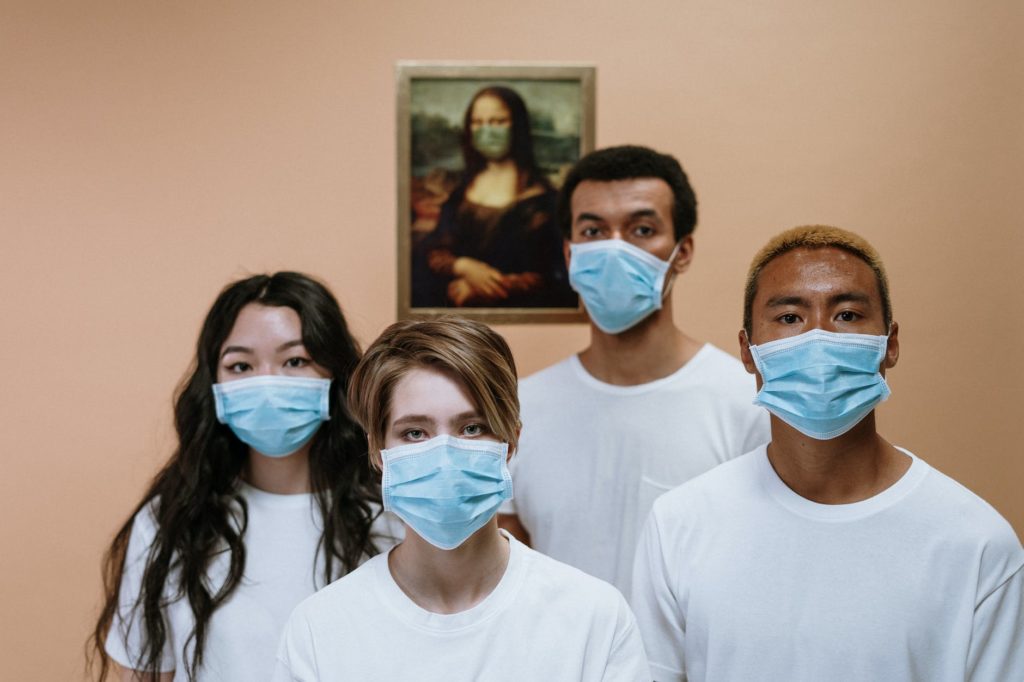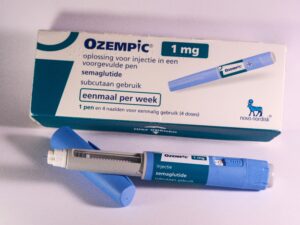The primary purpose of promoting universal mask use is stopping the spread of COVID-19. Wearing a mask helps prevent ejected droplets and aerosols (small particles that travel farther and stay airborne for a long period of time) from being released into the air.
The type of fabric and construction determines the efficacy of the mask. A recent Duke University study showed how many droplets were ejected during talking, comparing how effective different types of masks were in blocking particles expelled from the test subject.
However, recent studies and analysis of earlier experiments have shown that even if the mask does not block all the particles, the wearer is actually afforded a modicum of protection.
And if the person wearing a mask becomes infected, wearing the mask dramatically reduces the chance of becoming severely ill. In other words, when you wear a mask you are exposed to a lower dose of the virus than when not wearing a mask.
Recent studies in animal models involving the novel pathogen and over a century of data analysis with previous viral research demonstrate the lower the viral dose, the less severe the illness.
When you inhale a respiratory virus, it promptly starts commandeering cells, turning them into virus factories. The immune system launches an attack. The amount of virus to which you’re exposed is called the viral inoculum, or dose. If the dose is very high, the immune response can trigger damaging inflammation causing you to become very sick. If the dose of the virus is small, the immune system will most likely be able to mount countermeasures without drastic results. In this scenario, you will experience mild symptoms, or perhaps none at all.
A research paper published in July showed that the severity of COVID-19 was directly related to the exposure dose. Hamsters were divided into two groups. One group was placed in a cage that had a surgical mask over the air inlet and the other group was placed in a cage that did not. Then air was pumped into the cages from one containing infected hamsters.
As was expected, fewer hamsters in the cage with the masks over the air inlet became infected. Those that did become infected had a much milder form of the disease.
Numerous studies have concluded that 40% of people infected with SARS-CoV-2 are asymptomatic. Case studies have shown that the rate of asymptomatic infections increases where there is wide-spread mask use.
One such study involved an outbreak of COVID-19 aboard an Australian cruise ship, the Greg Mortimer, in late March. The messengers were given surgical masks and the crew was given N-95 masks. The reported mask usage was very high, and though 128 of the 217 passengers tested positive for COVID-19, an amazing 81% of the infected individuals remained asymptomatic.
Additional evidence has been compiled from two more recent outbreaks. A seafood processing plant in Oregon and a chicken processing plant in Arkansas, both of which experienced outbreaks, mandated that workers wear masks at all times. In both outbreaks 95% of infected individuals were asymptomatic.
The science behind universal mask-wearing for slowing the spread of COVID-19 is sound and well-proven. The recent evidence strongly suggests that besides protecting other people, wearing a mask offers two levels of protection for the wearer.
What this means is that even if your mask has a lower filtration factor, and it may not keep you from being infected, it will make a difference in your outcome. It just might be the difference between being hospitalized and on a ventilator and having a mild, possibly asymptomatic case of COVID-19.
CDC reports 6 percent of COVID deaths were solely from COVID-19
The CDC released a report that only six percent of confirmed COVID-19 deaths were from COVID-19 only. The other 94% of victims had underlying health conditions that contributed to the cause of death.
The takeaway from this statistic is that many Americans have underlying conditions such as high blood pressure, heart problems, diabetes, lung disorders, or obesity. The CDC lists 20 different factors that pose a higher risk of a negative outcome.
Oklahoma, in particular, is among the unhealthiest states in the nation. A report from the University of Minnesota State Health Access Data Assistance Center found that Oklahoma has the eighth-highest percentage in the country of chronic health conditions that increase the risk of severe illness from COVID-19.











